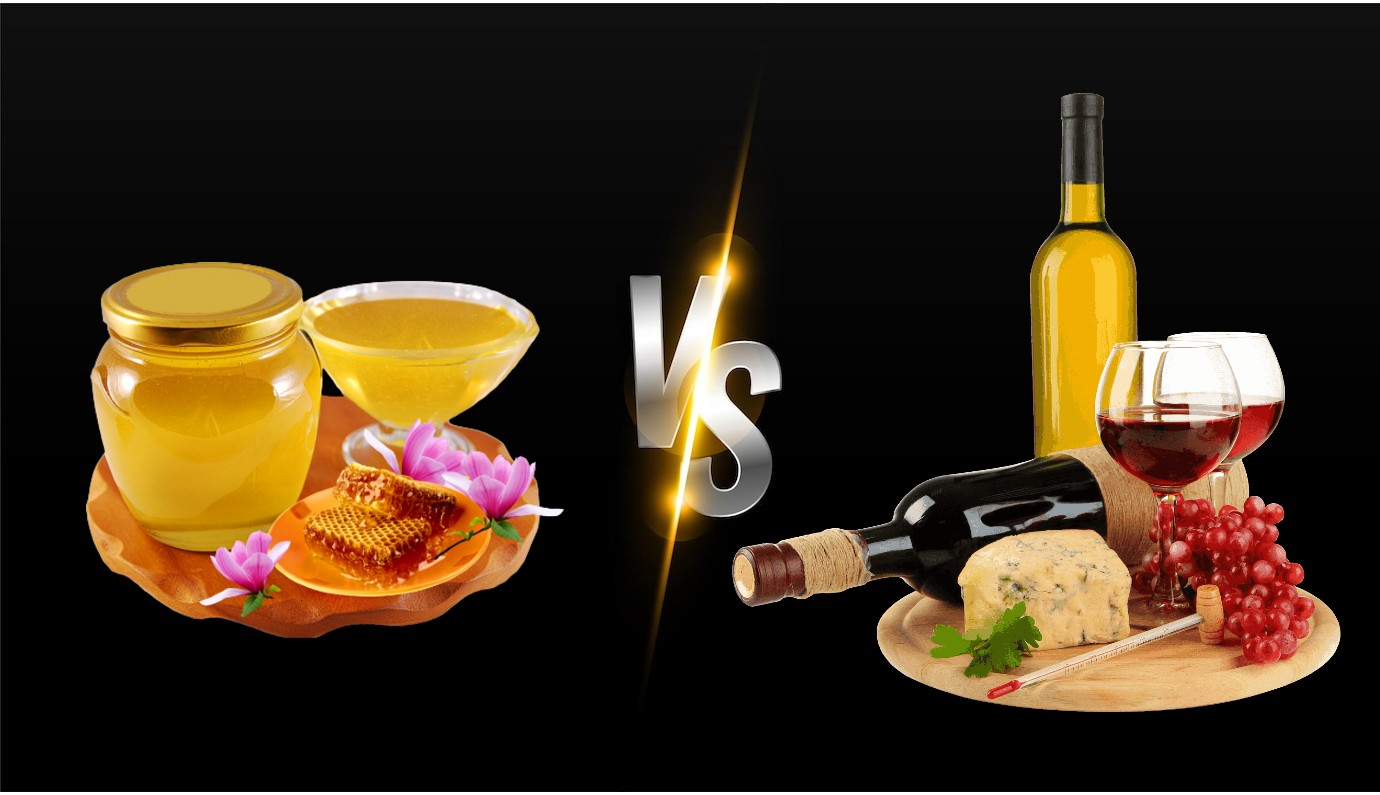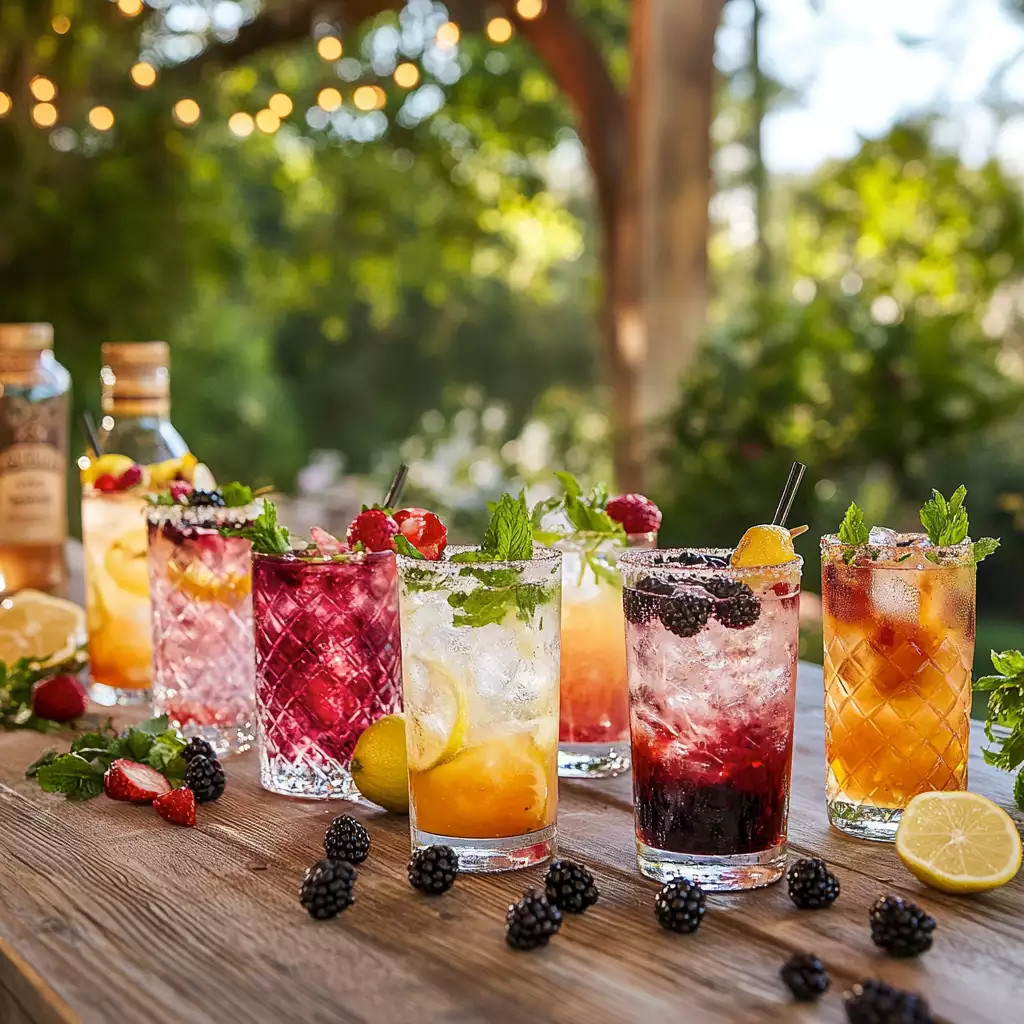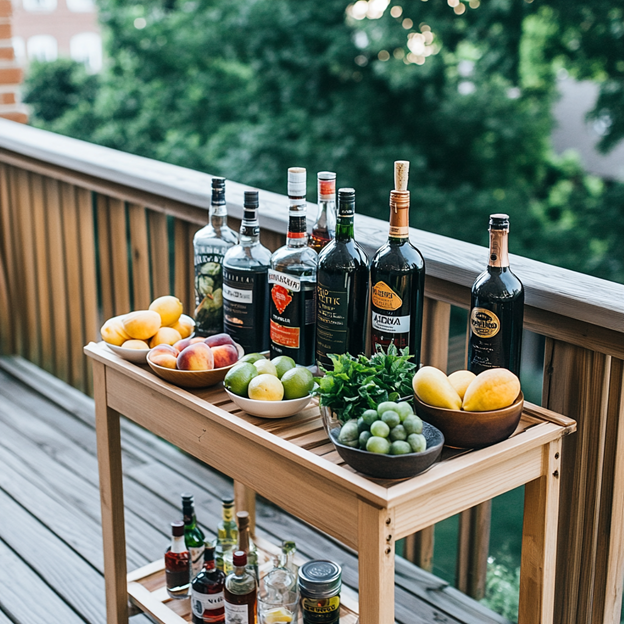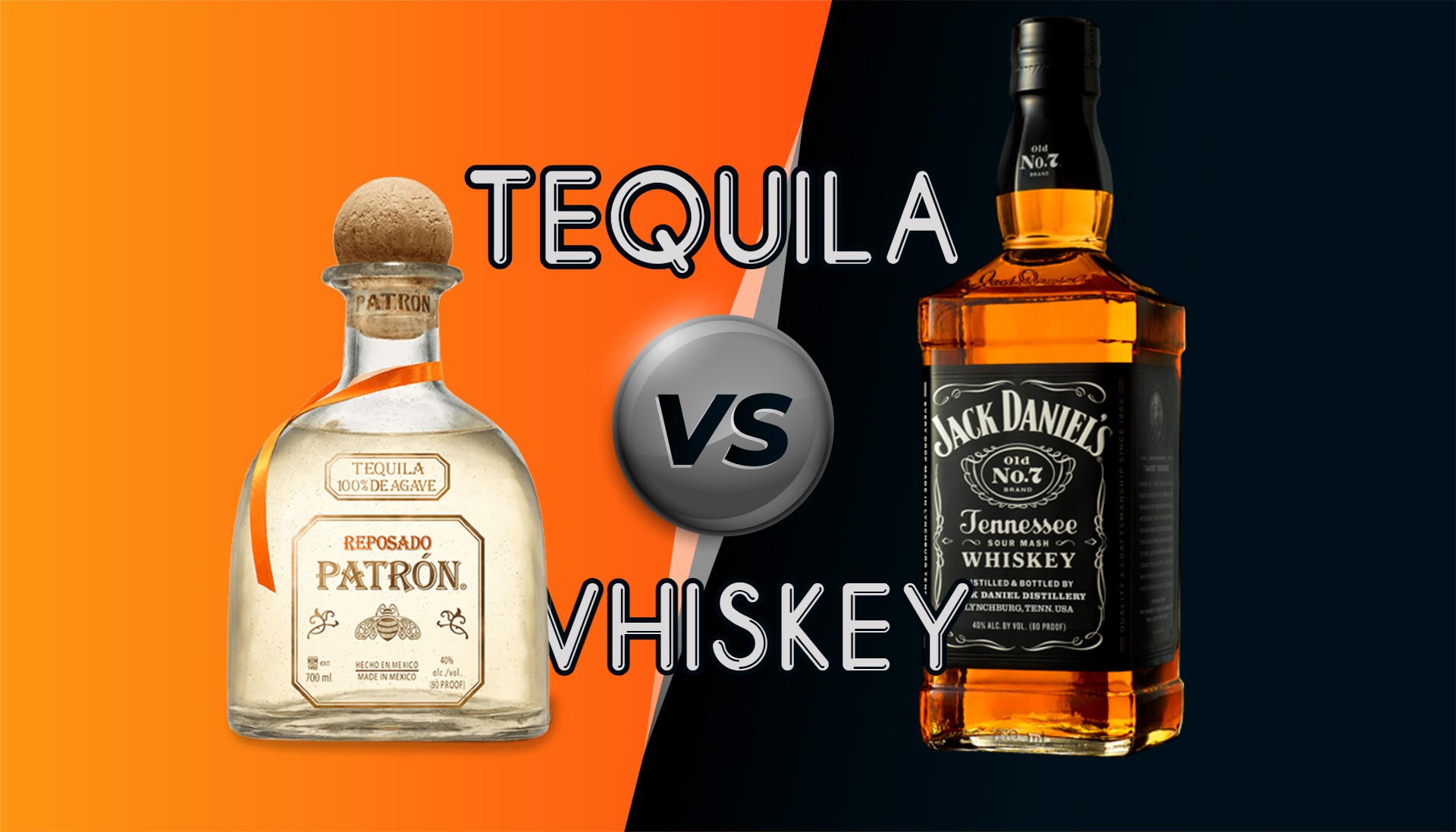Mead and wine have both been enjoyed by humans for thousands of years, making them true classics in the world of beverages. Mead, often referred to as “the nectar of the gods,” is believed to be one of the oldest alcoholic drinks known to humanity, with a history dating back over 8,000 years. It’s crafted by fermenting honey with water and often flavored with fruits, spices, or herbs. On the other hand, wine, which has its roots in ancient civilizations like the Egyptians and Romans, is made from fermented grapes and has an equally rich history.
In this article, we’ll take you on a journey through the fascinating realms of mead and wine, comparing them in terms of taste, production, variety, and more. So, grab your favorite glass, and let’s raise it to these time-honored elixirs!
Mead: The Golden Elixir 🍯
Mead, often referred to as “honey wine,” boasts a rich and storied history. It has been enjoyed by cultures across the globe, from the Vikings in Northern Europe to the Chinese in the East. The primary ingredient, honey, gives mead its distinct sweetness and a touch of floral complexity. Depending on the type of honey used, mead can range from light and floral to dark and robust. Varieties such as acacia mead offer a delicate sweetness, while buckwheat mead provides a bolder, earthier flavor.
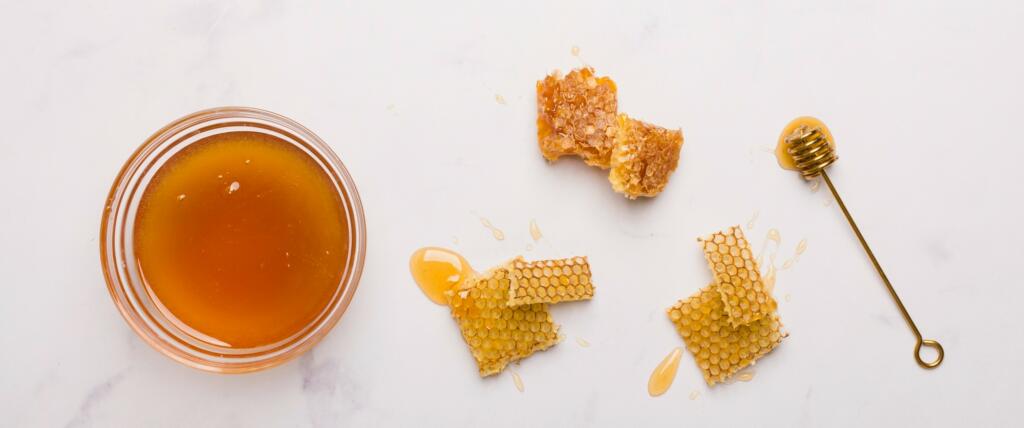
The History of Mead
The history of mead, often referred to as “the nectar of the gods,” is a journey through millennia, with roots that stretch back to ancient civilizations. Mead, made from honey and water, is one of the oldest alcoholic beverages known to humanity. Here’s a comprehensive look at the fascinating history of mead:
Origins in Prehistoric Times
Mead’s origins are shrouded in the mists of prehistory. It is believed that early humans, observing bees and their honey-making process, discovered honey as a natural sweetener. As honey was mixed with water and left to ferment naturally, the first mead-like beverages were born. These early meads were likely found by accident and became a cherished part of ancient diets.
Egypt and the Pyramids
Mead finds its earliest recorded mention in Egyptian history around 2,700 BCE. It was used for both religious rituals and daily consumption. Archaeologists have even discovered remnants of mead jars in the tombs of pharaohs, including King Tutankhamun. This suggests that mead was considered a divine and prestigious drink in ancient Egypt.
The Vikings and Norse Mythology
Mead played a significant role in Viking culture, where it was known as “mjǫðr.” In Norse mythology, the gods themselves cherished mead. It was believed that the first mead was created from the blood of the wise god Kvasir. The epic poem, “Poetic Edda,” tells the story of the gods’ quest for mead, including the famous theft of the Mead of Poetry.
Middle Ages and the Medieval Banquets
During the Middle Ages in Europe, mead continued to hold a special place in the hearts of many. It was often associated with celebrations, feasts, and rituals. Mead halls were gathering places where people would come together to share stories, songs, and, of course, mead.
Renaissance and Decline
As the centuries passed, mead’s popularity waned, and it gradually became less common. The rise of beer and wine production, which were easier to brew in large quantities, contributed to mead’s decline. By the Renaissance era, mead was largely overshadowed by these more accessible libations.
Modern Revival
The 20th century saw a resurgence of interest in mead. As people sought out unique and traditional beverages, craft meaderies began to appear. These modern meaderies combined ancient mead-making techniques with innovative flavors and approaches. Today, mead is experiencing a renaissance, with a growing community of enthusiasts and a wide variety of mead styles available.
Mead Production: A Labor of Love
Producing mead is a labor-intensive process that demands patience and precision. The key ingredients, honey and water, are combined and then fermented with yeast. Mead can be still, sparkling, or even fortified, like the famous honey-based liqueur, “meadery.” The fermentation process can take anywhere from a few months to several years, resulting in a beverage that captures the essence of its ingredients and the craftsmanship of its maker.
Here’s an overview of the steps involved in mead production:
Ingredients:
- Honey: The primary ingredient in mead is honey. Different types of honey, such as clover, wildflower, or orange blossom, can be used to create a variety of flavor profiles.
- Water: High-quality, clean water is essential. Tap water is typically suitable, but some mead makers prefer spring water for its mineral content.
- Yeast: Yeast is necessary to ferment the sugars in the honey into alcohol. There are various yeast strains available, each contributing unique flavors and characteristics to the final product.
- Nutrients: Yeast requires nutrients to thrive during fermentation. These nutrients often include yeast energizers and yeast nutrients.
Steps in Mead Production:
- Sanitization: To prevent unwanted bacteria or wild yeast from contaminating the mead, all equipment, including fermentation vessels, airlocks, and utensils, must be thoroughly cleaned and sanitized.
- Mixing: The honey is mixed with water to create a honey-water mixture called “must.” The ratio of honey to water determines the mead’s sweetness, with more honey resulting in a sweeter mead.
- Heating (Optional): Some mead makers choose to heat the honey-water mixture briefly to make it easier to dissolve the honey. However, this step is optional and not always necessary.
- Cooling: The must is then cooled to a temperature suitable for fermentation. This typically ranges from 60°F to 75°F (15°C to 24°C), depending on the yeast used.
- Pitching Yeast: The chosen yeast strain is added to the cooled must. This initiates the fermentation process, during which yeast consumes the sugars in the honey, producing alcohol and carbon dioxide.
- Fermentation: The fermentation process can take anywhere from a few weeks to several months, depending on the desired mead style. During this period, the mead-maker monitors the temperature and ensures that fermentation proceeds smoothly.
- Racking: After primary fermentation is complete, the mead is often transferred (racked) to another vessel, leaving behind any sediment. This helps clarify the mead and improve its flavor.
- Aging (Optional): Some meads benefit from aging, which can range from a few months to several years. Aging allows flavors to mellow and develop complexity.
- Bottling: Once the mead has reached the desired flavor and clarity, it is bottled. Mead can be bottled still, semi-sweet, or sparkling, depending on the mead maker’s preference.
Mead is ready to be enjoyed once it has been bottled. It can be served at various temperatures, from chilled to room temperature, depending on the style.
Mead Varieties
Mead comes in various styles, each with its unique characteristics:
- Traditional Mead: Made from honey, water, and yeast, with no additional flavorings.
- Melomel: Contains added fruits, such as berries, apples, or cherries, to impart fruity flavors.
- Cyser: A type of melomel made with apples or apple juice.
- Pyment: Made by adding grapes or grape juice to the honey-water mixture.
- Metheglin: Spiced mead that includes herbs, spices, and sometimes even tea or coffee.
- Hydromel: A lighter, lower-alcohol mead.
Wine: The Elegance of the Vine 🍇
Wine, a beloved staple at dinner tables and social gatherings, is celebrated for its diversity of flavors and styles. The type of grape, the region in which it’s grown (terroir), and the winemaking techniques employed all contribute to the vast array of wines available. From the bold and robust Cabernet Sauvignon to the crisp and refreshing Chardonnay, wine offers something for every palate.
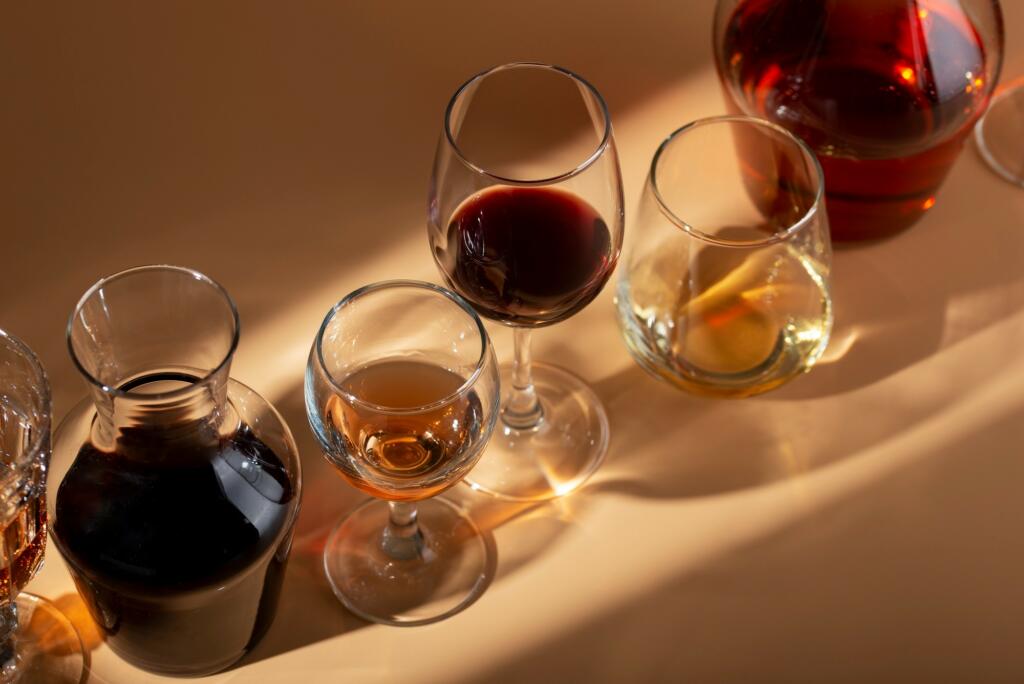
Wine History
The history of wine is a captivating journey through time, spanning thousands of years and touching nearly every corner of the globe. Wine, made from fermented grapes, holds a special place in the hearts and glasses of people worldwide. Here’s a concise overview of the rich and storied history of wine:
Ancient Beginnings:
- 6000-4000 BCE: The earliest evidence of winemaking dates back to ancient Mesopotamia (modern-day Iran and Iraq). The Sumerians, known for their cuneiform writing, left behind clay tablets that documented the cultivation of grapes and the production of wine.
- 3000 BCE: In ancient Egypt, wine was a symbol of luxury and was often used in religious ceremonies. Hieroglyphics depicted the harvesting and pressing of grapes.
The Greeks and Romans:
- 8th-6th Century BCE: The ancient Greeks embraced wine as an integral part of their culture. They had various gods associated with wine, including Dionysus, the god of wine, and Dionysian festivals celebrated the drink.
- 2nd Century BCE: The Romans further advanced the art of winemaking. They introduced various winemaking techniques, including barrel aging and the use of amphorae for storage and transportation.
Middle Ages and Monasteries:
- 4th-15th Century CE: During the Middle Ages, wine production continued to flourish, with monasteries playing a vital role. Monks meticulously cultivated vineyards and improved winemaking techniques. Wine was both a religious sacrament and a source of sustenance.
The Renaissance and Beyond:
- 15th-18th Century: The Renaissance brought advancements in viticulture and the understanding of terroir, the influence of soil and climate on wine flavor. Wine became a symbol of refinement and culture, enjoyed by nobility and commoners alike.
- 17th Century: European settlers introduced winemaking to the New World, including regions like California, South America, and Australia. These regions later gained prominence as wine-producing areas.
The Modern Times:
- 19th Century: The development of the wine industry in Bordeaux, France, led to the classification of Bordeaux wines and the recognition of various grape varietals.
- 20th Century: Innovations such as refrigeration and stainless steel tanks revolutionized winemaking, allowing for greater control over fermentation and storage.
- 21st Century: The wine industry continues to evolve, with an emphasis on sustainable and organic practices. New World wine regions like Napa Valley and New Zealand have gained international acclaim.
- Present: Today, the world of wine is incredibly diverse, offering an array of grape varieties, winemaking styles, and terroirs. Whether you’re savoring a classic Bordeaux, a crisp Sauvignon Blanc from New Zealand, or a robust Malbec from Argentina, each bottle tells a story of centuries of tradition and innovation in the art of winemaking. Wine remains a symbol of celebration, culture, and the joys of life.
The Art and Science of Winemaking
The winemaking process is a blend of science, art, and tradition. Winemakers carefully navigate each step to create wines that capture the essence of the grape variety and the terroir, resulting in a diverse world of wines that cater to a wide range of tastes and preferences. Here’s a comprehensive overview of the winemaking process:
1. Harvesting:
The winemaking process begins with the harvest, which is typically carried out in late summer or early autumn when grapes are at their peak ripeness.
Winemakers carefully select grapes based on factors such as sugar content (measured as Brix), acidity, and flavor. The timing of the harvest can significantly influence the wine’s profile.
2. Crushing and Destemming:
Once harvested, the grapes are transported to the winery and sorted. Any damaged or undesirable grapes are removed.
Grapes are then crushed to break their skins and release the juice. This can be done using traditional methods, such as stomping or using mechanical crushers.
In many cases, the stems are removed from the grapes through a process called destemming. This helps control the wine’s tannin levels, as tannins are primarily found in grape skins and stems.
3. Primary Fermentation:
The crushed grapes, including the juice, pulp, skins, and seeds, are transferred to fermentation vessels. These can include stainless steel tanks, wooden barrels, or concrete tanks.
Yeast, either naturally occurring on the grape skins or added as a cultured strain, is introduced to the grape juice. Yeast consumes the sugars in the juice and converts them into alcohol and carbon dioxide.
During fermentation, the temperature and conditions are carefully monitored, as they can significantly impact the wine’s flavor and aroma.
4. Pressing:
After primary fermentation, the solid grape material is separated from the liquid. This is typically done using a wine press.
The pressed juice, known as “free-run wine,” is considered the highest quality and is often kept separate from the wine obtained during the pressing process.
5. Secondary Fermentation:
In some winemaking styles, particularly for red wines and certain white wines, a second fermentation process called malolactic fermentation (MLF) occurs.
MLF is carried out by lactic acid bacteria, which convert harsh malic acid into softer lactic acid. This process can enhance the wine’s texture and flavor complexity.
6. Aging:
The wine is aged in various vessels, including oak barrels, stainless steel tanks, or concrete vats. The choice of vessel and duration of aging depend on the desired style of wine.
Oak aging can impart flavors, aromas, and tannins to the wine. Different types of oak (e.g., French, American) offer distinct characteristics.
7. Clarification and Filtration:
To clarify the wine and remove any remaining solids or impurities, winemakers may use fining agents or filtration techniques.
This step ensures that the wine is clear and stable.
8. Bottling:
The final step is the bottling of the wine. The wine is carefully transferred from aging vessels to bottles, often with the addition of a small amount of sulfur dioxide to preserve it.
The choice of bottle type and closure (cork, screw cap) can influence the aging potential and presentation of the wine.
9. Aging in Bottle:
Many wines continue to evolve and develop in the bottle over time. The aging potential varies depending on the type of wine.
Mead vs. Wine: A Head-to-Head Comparison
Now that we’ve explored the individual characteristics of mead and wine let’s dive deeper into the comparison of these two ancient elixirs. In this section, we’ll break down their differences and similarities, helping you make an informed choice for your next sip.
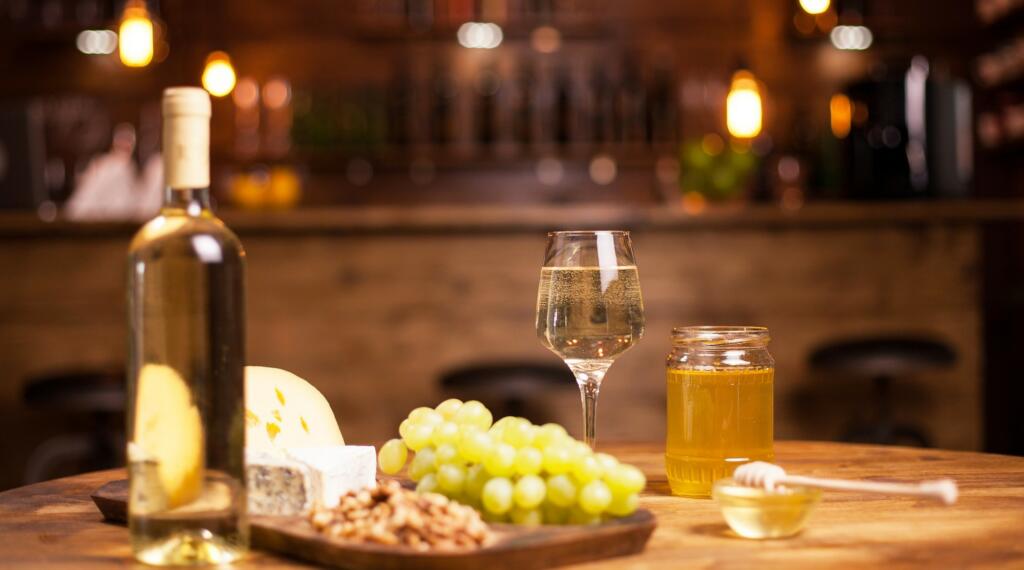
Taste and Flavor Profiles 🍯🍷
Mead:
Sweetness: Mead typically offers a sweeter profile due to its honey base. It can range from mildly sweet to dessert-level sweetness.
Complexity: The use of various types of honey and added ingredients like fruits, spices, or herbs results in a wide spectrum of flavors, from floral and fruity to spicy and earthy.
Wine:
Variety: Wines come in a broad range of flavors, from bone-dry to super sweet. The choice of grape and region plays a significant role in the taste.
Terroir: Wine’s distinct flavors often reflect the terroir, encompassing soil, climate, and winemaking techniques. This adds layers of complexity to the taste
Production Process 🍯🍷
Mead:
Simplicity: Mead production is relatively simple, focusing on honey, water, and yeast. It often requires less equipment and expertise compared to winemaking.
Fermentation Time: Mead can ferment relatively quickly, but aging can significantly enhance its flavors.
Wine:
Complexity: Winemaking involves many variables, including grape selection, crushing, fermentation, and aging. It demands a high level of skill and precision.
Aging Potential: Certain wines, like fine reds, benefit from extended aging, sometimes decades, to reach their peak flavor.
Variety and Styles 🍯🍷
Mead:
Limited Availability: Mead is less common than wine, and finding a wide variety of mead styles can be challenging, depending on your location.
Styles: Common mead styles include traditional mead, melomel (fruit-infused), and metheglin (spiced mead).
Wine:
Abundant Selection: Wine enthusiasts are spoiled for choice with an abundance of grape varieties and wine styles available worldwide.
Classifications: Wine comes in categories such as red, white, rosé, sparkling, and fortified, each offering diverse options.

Enjoy Your Favorite Wine and/or Mead 🥂
There’s no clear winner in the timeless debate of honey mead vs. wine. Each of these ancient elixirs brings its own unique charm to the table, offering a world of flavors and experiences for enthusiasts to explore. Whether you prefer mead’s sweetness and history or wine’s diversity and elegance, the choice ultimately rests in your glass.
Discover our diverse range of wines online and choose from an array of international and local selections. You can explore our curated collection, all from the comfort of your home. You can also visit a nearby Zipps Liquor store in Texas to experience our commitment to quality and excellence in person.
At Zipps Liquor, we take pride in being your trusted advisor in the beverages world. Whether it’s wines, spirits, or mead-making supplies, we are here to provide you with the finest options and exceptional service. Cheers to your next delightful wine journey, and we look forward to serving you at Zipps Liquor! 🍷🥂
Visit Zipps Liquor for all your beverage needs.

